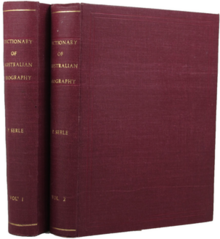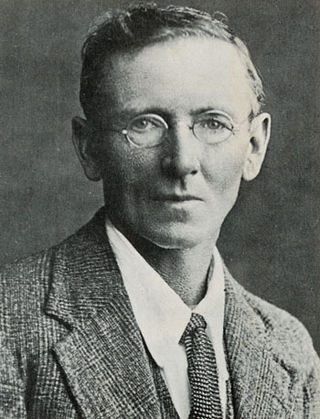
John Shaw Neilson was an Australian poet. Slightly built, for most of his life he worked as a labourer, fruit-picking, clearing scrub, navvying and working in quarries, and, after 1928, working as a messenger with the Country Roads Board in Melbourne. Largely untrained and only basically educated, Neilson became known as one of Australia's finest lyric poets, who wrote a great deal about the natural world, and the beauty in it.

The Australian Dictionary of Biography is a national co-operative enterprise founded and maintained by the Australian National University (ANU) to produce authoritative biographical articles on eminent people in Australia's history. Initially published in a series of twelve hard-copy volumes between 1966 and 2005, the dictionary has been published online since 2006 by the National Centre of Biography at ANU, which has also published Obituaries Australia (OA) since 2010.
William Aitcheson Haswell was a Scottish-Australian zoologist specialising in crustaceans, winner of the 1915 Clarke Medal.
Anne Wilson, Lady Wilson was an Australian poet and novelist. Most of her work was published as Mrs James Glenny Wilson or the pseudonym Austral.
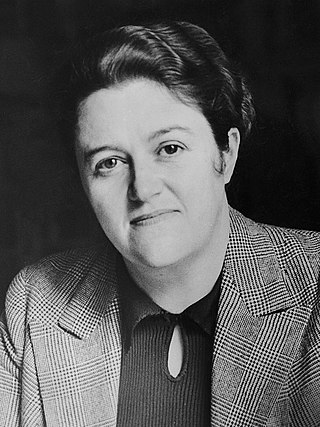
Helen de Guerry Simpson was an Australian novelist and British Liberal Party politician.
John William Lewin was an English-born artist active in Australia from 1800. The first professional artist of the colony of New South Wales, he illustrated the earliest volumes of Australian natural history. Many of his illustrations were of native Australian birds on native Australian plants.
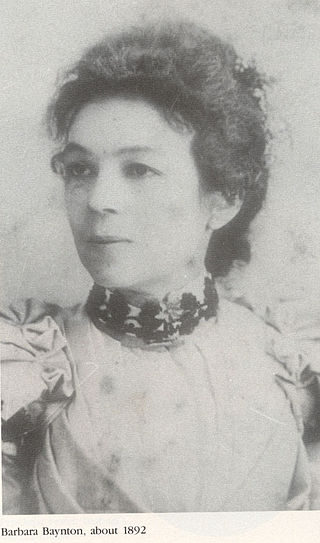
Barbara Janet Baynton was an Australian writer known primarily for her short stories about life in the bush. She published the collection Bush Studies (1902) and the novel Human Toll (1907), as well as writing for The Bulletin and The Sydney Morning Herald. She was a shrewd manager of her second husband's estate, owning properties in Melbourne and London. She acquired the title Lady Headley from her third marriage to Rowland Allanson-Winn, 5th Baron Headley, but never wrote under that name.

Sir Ernest Scott was an Australian historian and professor of history at the University of Melbourne from 1913 to 1936.
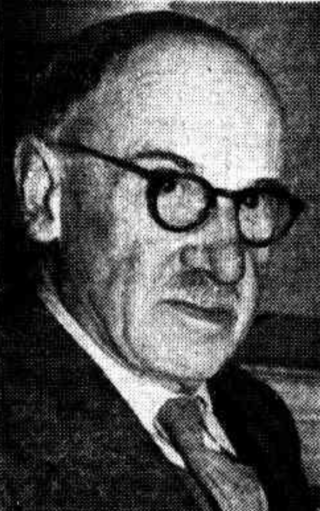
Percival Serle was an Australian biographer and bibliographer.
David Blair was an Irish Australian politician, journalist and encyclopedist.
Richard Thomas Baker was an Australian economic botanist, museum curator and educator.
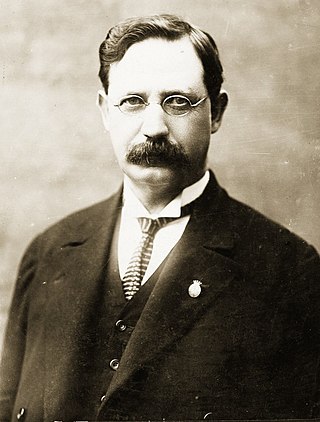
Frederick Johns was an American-born Australian journalist and biographer.
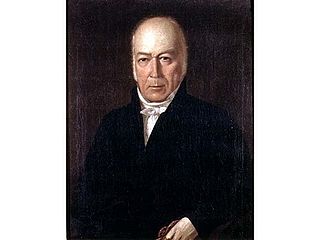
Laurence Hynes Halloran was a poet, unordained clergyman and felon who became a pioneer schoolteacher, journalist, and bigamist in Australia, founder of the Sydney Public Free Grammar School.
Hubert Newman Wigmore Church was an Australian poet.
George Burnett Barton was an Australian lawyer, journalist and historian.

The Zoology of the Voyage of H.M.S. Beagle Under the Command of Captain Fitzroy, R.N., during the Years 1832 to 1836 is a 5-part book published unbound in nineteen numbers as they were ready, between February 1838 and October 1843. It was written by various authors, and edited and superintended by Charles Darwin, publishing expert descriptions of the collections he had made during the Beagle voyage.
William Westgarth was a Scottish-born merchant, historian, statistician and politician in Australia. Westgarth was a member of the New South Wales Legislative Council, and, later, the Victorian Legislative Council.
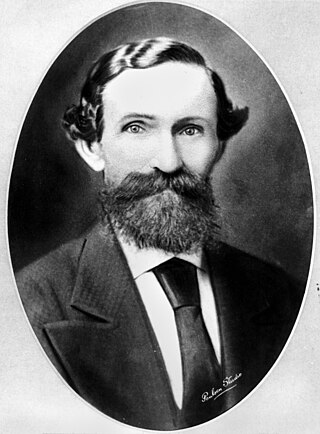
John Murtagh Macrossan was an Australian politician of the late 19th century in the parliament of Queensland.

Alan Geoffrey Serle, known as Geoff, was an Australian historian, who is best known for his books on the colony of Victoria; The Golden Age (1963) and The Rush to be Rich (1971) and his biographies of John Monash, John Curtin and Robin Boyd.
South Melbourne College was a co-education boarding school in South Melbourne, Victoria, Australia. The school was founded by Thomas Palmer in 1883.
